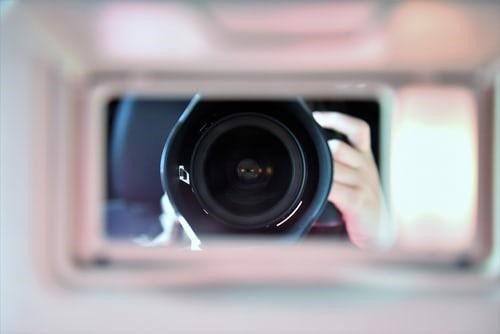Introduction To Self-Image And Related Psychology

If you are keen on learning positive psychology, it is really important to understand the concept of self-image. Yes, self-image is related to positive psychology, yet self-image is a distinct concept with a different place and importance. This blog contains everything you need to know about self-image. Also, you can read the three elements of self-compassion to learn more about the concepts of positive psychology. Let’s get started.
This blog covers:
Difference between positive self-image and negative self-image
The importance of having a positive self-image
Issues caused by low self-image
Small takeaway from the author
Introduction to Self-image

Self-image does not limit what you see yourself when you look in the mirror. Self-image comes into the picture when we see ourselves globally with internal and external perspectives. As per the dictionary, self-image means, “the idea, conception, or mental image one has of oneself.” Consecutively, self-image is what you see when you look in the mirror.
Self-image is how we perceive ourselves. The number of self-impressions took over time and how positive you are about yourself as a person. Self-image is all about how confident you are about your actions and thoughts. Also, how negative or positive you feel about yourself when you discuss ideas and capabilities.
Related Read: Influence of body image on mental health
Psychology of Self-image
The concept of self-image came from psychologist Morris Rosenberg in 1965 when his book “Society and the Adolescent Self-image” was published. Self-image is related to self-concept, self-efficacy, self-esteem, self-confidence, etc. however, as far as research I found that self-image is based on our perceptions. Self-image is built with time and experiences. It often changes with time and other influences.
Also Read: How to Build Self Confidence by Identifying These Strengths?
The Elements and Dimensions of Self-Image
The three elements of self-image are:
1. How a person perceives himself\herself.
2. How a person interprets other’s perceptions.
3. How a person would like to be.
Six dimensions of self-image are:
1. Physical dimension: based on appearances.
2. Psychological dimension: based on personal evaluation of personality.
3. Intellectual dimension: based on personal intelligence.
4. Skills dimension: based on technical and social skills.
5. Moral dimension: based on values and principles.
6. Sexual dimension: based on feminine\masculine norms.
Note: The above-mentioned elements and dimensions describe the framework of self-image. While you start to evaluate please note that not a widely accepted framework. This only describes possibilities related to self-image.
Difference between Positive and Negative Self-Image
| Positive Self-Image | Negative Self-Image |
| ● Looking at yourself as a desirable and attractive person | ● Looking at yourself as an undesirable and unattractive person |
| ● Looking at yourself as an intelligent and smart person. | ● Looking yourself an unintelligent and dumb personality. |
| ● Seeing yourself happy and healthy whenever you look in the mirror. | ● Seeing yourself as sad and unhealthy whenever you look in the mirror. |
| ● Believing that you’re the closest version of the ideal self. | ● Believing that you’re not what you desire to be. |
| ● Believing that others also perceive you as all the above-mentioned points. | ● Believing that others also perceive you as all the above-mentioned points. |
The Importance Of Having A Positive Self-Image
1. Self-Image Disorder And Distorted Self-image
Distorted self-image means having thoughts of unreal views about yourself. When self-image is highly detached from reality, it can result in serious psychological and emotional problems. According to psychology, this is classified as Body Dysmorphic Disorder (BDD). According to the Anxiety and Depression Association of America, “BDD is a body-image disorder characterized by persistent and intrusive preoccupations with an imagined or slight defect in one’s appearance.”
Also Read: How To Set Healthy Boundaries For Yourself. Keep Your Energy Intact
We all have personal views about ourselves that we don’t like about ourselves or wish we could change those things which result in occasionally exaggerating our flaws. However, people experiencing BDD are stuck with a more dramatic and negative state of mind. Some of the signs of BDD are camouflaging, comparison of body parts, seeking surgery, avoiding mirrors, picking skin continuously, excessively grooming or exercising, or changing clothes repeatedly.
2. Unstable Self-Image

An unstable self-image comes into the picture when a person is excessively negative about his\her personality which leads to a different issue classified as Borderline Personality Disorder (BDD). People experiencing BDD lacks self-concept and self-image. They feel like they don’t know what want to do or who they are. Additionally, their self-concept keeps on changing with time and experiences. The most common symptom of BDD is that they have trouble seeing their present self, past self, and future self as a similar personality.
Also Read: Self-improvement Guide: Living with someone with depression
More common symptoms of unstable self-image and BDD are the distorted sense of self, lack of empathy, feeling of emptiness, persistent fear of rejection, history of unstable relationships, mood swings, impulsive, and impulsiveness.
3. Low self-image and depression
Low self-image can result in depression. When feelings of low self-image hit us hard, it takes a hit on our mental health which results in depression. Effective treatment of depression is the only effective cure for building a better self-image and learning self-concepts. It makes us happier and healthier. If you’re looking for help online, you can consider Betterhelp for online counseling.
Disclaimer: As BetterHelp Affiliate, We may receive compensation from BetterHelp or other sources if you purchase products or services through the links provided on this page.
Related Read: Interpersonal Psychotherapy for Depression
Issues caused by Low Self-Image
When people get obsessed with self-image, it directly impacts mental health which leads to various problems and issues. Below mentioned are some of the issues related to low self-image:
- Stress
- Social impairment
- Eating disorders
- Body Dysmorphic Disorder
- Depression
- Anxiety
- Continuous feeling of shame
- Physical disfigurement
Small Takeaway from Author
Low self-image can be treated with proper counseling and diagnosis. If you or your loved one is experiencing the symptoms of low self-image, Calm Sage strongly suggests seeking help. You can also consider online counseling or treatment.
I hope this blog helps you to understand psychology-related self-image. For more such content, follow Calm Sage on all social media platforms.
Thanks for reading.





















One of my cousin is suffering with the symptoms of low self image. I would recommend him to take help from you. Thank you Calm Sage!
This was something new to learn! I found the content fresh and intriguing. Kudos to the writer for writing it so crisp.